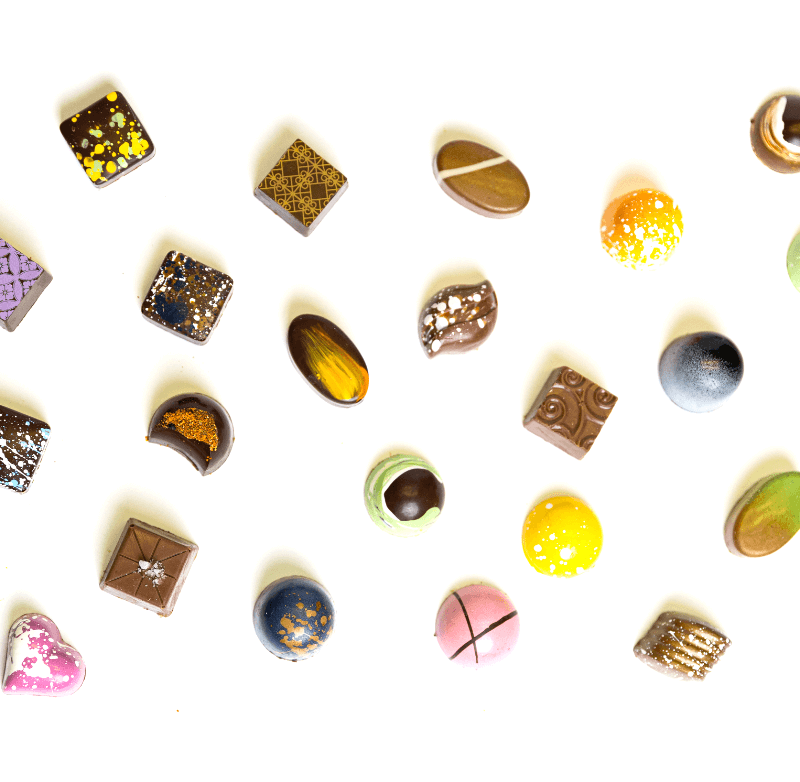A Beginner's Guide to Chocolate Tasting: What to Look for in Artisan Chocolates
Welcome to the delightful world of chocolate tasting! If you're new to the scene, you're in for a treat. Chocolate tasting is an art form that allows you to explore the rich and complex flavors of craft chocolate. In this guide, we’ll walk you through what to look for when tasting artisan chocolates and how to fully enjoy the craft chocolate experience.
Understanding Artisan Chocolates
Before we dive into the tasting process, it’s important to understand what sets artisan chocolates apart from the mass-produced varieties. Artisan chocolates are often made in small batches using high-quality ingredients. They are crafted with care and attention to detail, resulting in unique flavors and textures.
The Craft Chocolate Experience
The craft chocolate experience is all about savoring the nuances of the chocolate. Unlike mass-produced chocolate, which often contains additives and preservatives, artisan chocolate is pure and made from carefully selected cacao beans. This purity allows for a more authentic taste experience.
Small-Batch Chocolate
Small-batch chocolate refers to chocolate produced in limited quantities. This approach allows chocolatiers to maintain control over the quality and flavor profile of each batch. As a result, no two batches are exactly the same, offering chocolate lovers a chance to explore a variety of flavors.

Preparing for Your Chocolate Tasting
To get the most out of your chocolate tasting, it’s important to prepare your palate and create the right environment. Here’s how you can set the stage for a successful tasting.
Setting the Scene
Choose a quiet and comfortable place to conduct your tasting. Make sure you have good lighting so you can appreciate the color and texture of the chocolate. A clean palate is also essential, so avoid strong flavors such as coffee or spicy foods before your tasting session.
Gathering Your Tools
You'll need a few tools to get started. A clean glass of water is essential to cleanse your palate between tastings. You might also want a notebook to jot down your thoughts and impressions of each chocolate.
The Chocolate Tasting Process
Now that you’re prepared, it’s time to start tasting. Follow these steps to enhance your artisan chocolate tasting experience.
Step 1: Observe
Begin by looking at the chocolate. Notice its color and sheen. High-quality chocolate should have a glossy finish and an even color. Any discoloration or dullness could indicate improper storage or poor quality.
Step 2: Smell
Bring the chocolate to your nose and inhale deeply. The aroma can tell you a lot about the chocolate’s flavor profile. You might detect hints of fruit, nuts, or spices, depending on the origin of the cacao beans.
Step 3: Snap
Break a piece of chocolate and listen for the snap. A clean, crisp snap indicates well-tempered chocolate. This is a sign of good craftsmanship and quality.
Step 4: Taste
Finally, place a piece of chocolate on your tongue and let it melt slowly. Pay attention to the flavors that develop. Does it start with a hint of fruitiness? Does it have a nutty finish? Notice the texture as well. Is it smooth and creamy, or does it have a grainy texture?
Step 5: Reflect
Take a moment to reflect on the experience. What flavors stood out to you? How did the chocolate make you feel? Use your notebook to jot down your thoughts and preferences.
Exploring Flavor Profiles
Artisan chocolates offer a wide range of flavors that can vary based on the origin of the cacao beans and the chocolate-making process. Here are some common flavor profiles you might encounter.
Fruity
Chocolates with a fruity profile might have notes of berries, citrus, or tropical fruits. These flavors are often found in chocolates made from beans grown in certain regions, such as Madagascar.
Nutty
Nutty chocolates might remind you of roasted almonds or hazelnuts. This flavor profile is often associated with chocolates made from beans grown in South America.
Earthy
Earthy chocolates have deep, rich flavors that might include hints of tobacco or wood. These chocolates often come from regions like Africa.

Pairing Artisan Chocolates
Pairing artisan chocolates with other foods and beverages can enhance the tasting experience. Here are a few pairing suggestions.
Wine
Pair dark chocolate with a full-bodied red wine, like Cabernet Sauvignon or Merlot, to complement its richness. For milk chocolate, try a lighter wine such as Pinot Noir.
Cheese
Surprisingly, cheese and chocolate can make an excellent pairing. A creamy brie can balance the bitterness of dark chocolate, while a sharp cheddar might pair nicely with milk chocolate.
Fruits
Fresh fruits like strawberries, raspberries, or bananas can enhance the fruity notes in certain chocolates. Try pairing them with a piece of chocolate for a delightful contrast.
Conclusion
Embarking on a journey into the world of artisan chocolate tasting is a rewarding experience that engages all your senses. By understanding what to look for in craft chocolates and how to conduct a tasting, you can truly appreciate the craftsmanship and flavors of small-batch chocolates. Whether you’re a beginner or a seasoned chocolate lover, there’s always something new to discover in the world of artisan chocolates. Enjoy the journey!
Indulge in Gourmet Delights: Shop Dallmann Fine Chocolates
Ready to elevate your chocolate tasting experience? Discover the exquisite flavors of Dallmann Fine Chocolates, where artisan craftsmanship meets gourmet quality. Explore our selection of small-batch chocolates and treat yourself or a loved one to a delightful journey of taste. Visit our shop today and indulge in the finest chocolates crafted with passion and precision!













